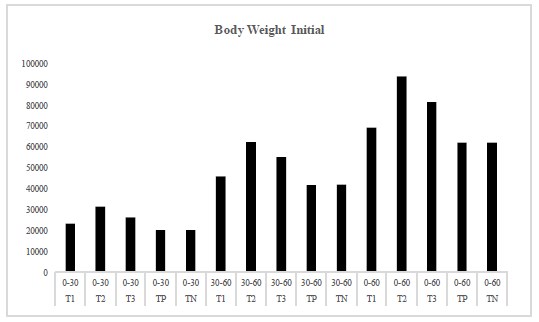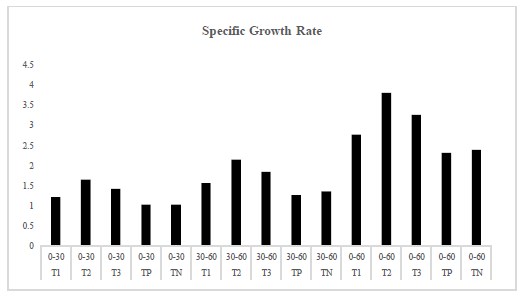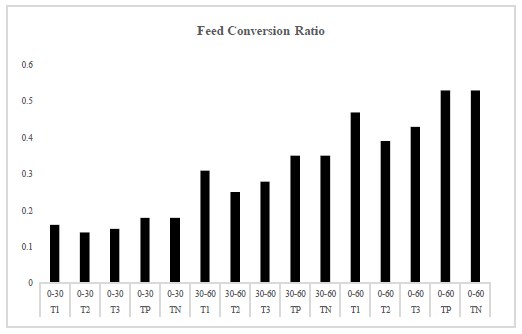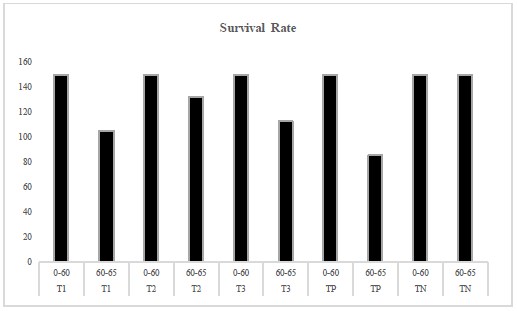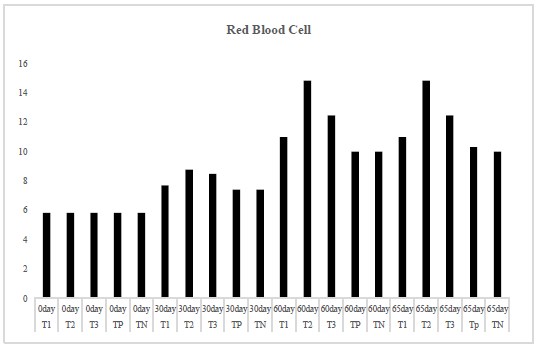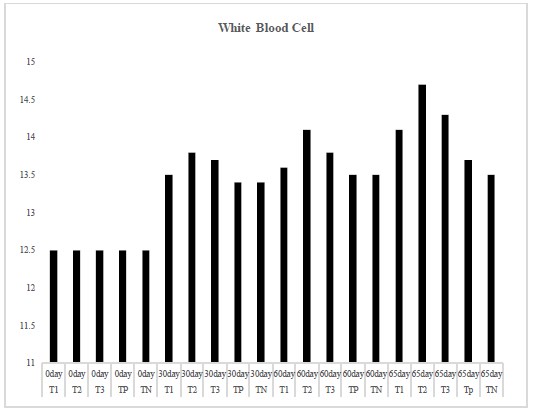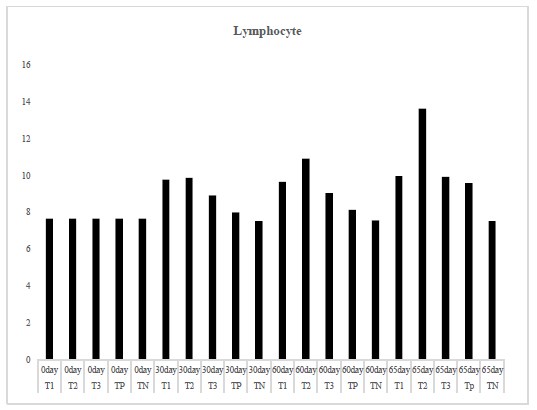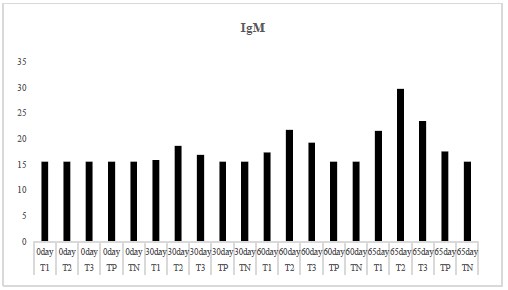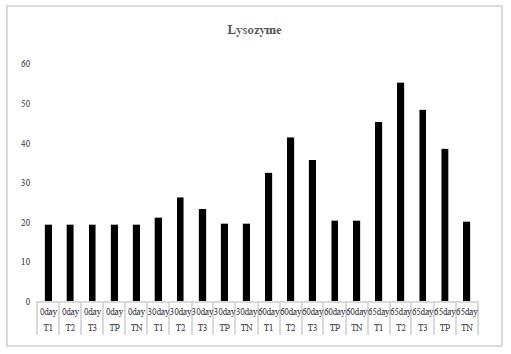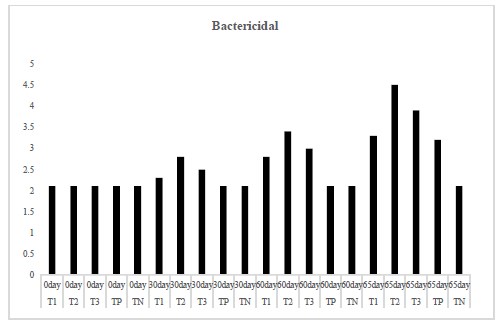Introduction
Fish is one of the essential and valuable sources of protein, fat, and energy. Global statistics on aquaculture products show that in recent years, aquaculture products have increased in many parts of the world1. Rainbow trout (O. mykiss) is a widely cultured freshwater fish species with economic significance in aquaculture2. Rainbow trout are recognized by their recognizable pink lateral line stripe and are remarkably diverse in size, color, and preferred environment. It frequently inhabits cold, clear streams and rivers and is known for its rapid swimming. Because of its economic and ecological relevance, Rainbow trout remains a research topic in aquaculture techniques, conservation initiatives, and aquatic ecosystem dynamics3.
Herbal immunostimulants have recently been taken into consideration due to several features, including stimulating the non-specific immune system, increasing tolerance to environmental stresses, reducing losses due to virus, bacteria, and parasitic agents, reducing environment and aquaculture risks, improving growth indices, accelerating food absorption, enhancing therapeutic impacts, decreasing side effects, more accessible access, and lower prices4. Plant extracts in the feed sector are promising because they are reasonably priced and safe for fish and men, who are the final customers5.
C. pepo, commonly known as pumpkin, belongs to the family Cucurbitaceae and has been recognized for its potential health benefits due to its rich nutritional profile and bioactive compounds6. Extracts derived from C. pepo have been studied in various fields, including agriculture and aquaculture, for their potential effects on growth promotion, immune enhancement, and disease resistance7.
Y. ruckeri is a bacterium that causes enteric redmouth disease in fish, including rainbow trout, leading to significant economic losses in aquaculture due to morbidity and mortality8.
Several studies have explored the effects of C. pepo extract on growth and health parameters in aquaculture9,10 as well as its potential to increase the resistance of fish to Y. ruckeri infections. These studies have reported diverse results. Therefore, the present study evaluated the effects of C. pepo extract on some blood factors and growth indices of rainbow trout, as well as fish resistance to Y. ruckeri.
Materials and methods
Cucurbita pepo extract. The amount of 120 g of dry plant powder was mixed with 96 % ethyl alcohol and 30 % distilled water in a ratio of 70 % by the soaking method, then, it was kept for 72 h until the hydroalcoholic extract was prepared. After filtering the supernatant with filter paper, the filtered solution was extracted by vacuum evaporation method using a rotary device. The obtained extract was concentrated under the hood for 24 h.
Preparation of Yersinia ruckeri. The bacterium was cultured in a lyophilized form from the microbial bank of Iran's Biological Reserves Center and cultured in enriching (trypticase soy agar) and special (Whatman-Shots) culture medium and incubated at 37° C for 24 to 48 h. Then, a colony was removed from the solid medium, added to the liquid medium, and placed in a greenhouse at 37° C for 24 h. After centrifugation at 5000 rpm for 20 min at 20° C, the grown cells were washed with saline solution, and the McFarland (1.5×108) semi-graded turbidity was prepared by dilution method.
Experimental fish. 750 rainbow trout, with an average weight of 40-120 g, were chosen randomly and placed in 15 fiberglass tanks, each with a capacity of 1000 L and a density of 50 fish. A HACH portable multimeter (model HQ40d) was used throughout the experiment to monitor the water's physical and chemical quality parameters (temperature, pH, and dissolved oxygen) every 2 weeks.
Fish from separate pools were divided into 4 groups (one control + 3 treatments), each with 3 replicates. First, the fish were accustomed to the new conditions for 2 days and fed with standard food. The amount of feed required daily was calculated based on fish weight and water temperature and the coefficient of the standard feeding table. Biometry was performed on the first day (before starting C. pepo extract). (Tables 1, 2)
Table 1 Calculation of Cucurbita pepo extract dose and classification of fish
| Group | Dosage used | Type of prescription |
|---|---|---|
| Positive control | Nutrition without extract + exposure to bacteria | with food |
| Negative control | Nutrition without extract | with food |
| Treatment 1 | 2 g mg-1 Cucurbita pepo extract | with food |
| Treatment 2 | 4 g mg-1 Cucurbita pepo extract | with food |
| Treatment 3 | 6 g mg-1 Cucurbita pepo extract | with food |
Table 2 the number of fishes in each group
| Positive control | Negative control | Treatment 1 | Treatment 2 | Treatment 3 | |
|---|---|---|---|---|---|
| The first repetition | 50 | 50 | 50 | 50 | 50 |
| The second repetition | 50 | 50 | 50 | 50 | 50 |
| The third repetition | 50 | 50 | 50 | 50 | 50 |
| Total | 150 | 150 | 150 | 150 | 150 |
Growth performance determination. To check the survival of the fish, daily losses were recorded, and they were removed from the environment. In the study of the growth process, the length factors were measured by a biometric board and a ruler, and a digital scale with an accuracy of 0.01 g was used to determine the weight11, and specific growth was obtained from the method and Hevrøy et al.12, and daily was obtained from the method of Bekcan et al.13.
At the end of the experiment, the following production parameters were determined:
Weight gain (WG) = final mean weight (g) - initial mean weight (g). Specific growth rate (SGR) (% day-1) = 100 [ln (final mean weight) - ln (initial mean weight)]/days. Feed conversion ratio (FCR) = dry feed intake/wet weight gain. Survival rate (SR) = 100 [(Stocked fish number x Survived fish number) (Stocked fish number -1)]. Specific growth rate (SGR): SGR = [(ln BWf (g)-ln BWi (g))/t]×100t=30 days.
Hematological and blood biochemical analysis. Blood was obtained from the caudal vein using heparinized syringes (0.1 mL) for hematological analysis. White blood cell (WBC), red blood cell (RBC) indices, and lymphocyte (LWM) counts were performed according to Borges et al.14. Additionally, blood was collected using non-heparinized syringes to separate the serum. The samples were kept at 4° C for 4 h before being centrifuged at 3000 g for 15 min. Then, serum samples were taken for subsequent biochemical examination. According to Sanchooli et al.15 the immunoglobulin M (IgM) content and lysozyme enzyme were studied to examine the immunological parameters.
Examining the serum bactericidal. This study cultured Y. ruckeri in a blood agar culture medium and mixed it with PBS. Then, this suspension was serially diluted 10:1 five times. Every 5 dilutions were used to perform this experiment. 450 µL of suspension was mixed with 50 µL of blood serum and incubated for 1 h at 37° C. After incubation, 100 µL of this mixture was cultured in nutrient agar plates, and after 24 h, the number of colonies grown on the plates was counted.
Statistical analysis. The Kolmogorov-Smirnov test was used to determine the normality of data. To conduct the statistical analysis, SPSS version 26 was used. The t-test, mean, and standard deviation were used. A one-way analysis of variance ANOVA was used to determine the impact of treatments on fish performance. The significance level of the results was considered at the statistical level (P < 0.05).
Results
Weight gain. The results indicate that pumpkin seed (C. pepo) extract was effective in increasing the weight of rainbow trout and there was a significant difference between the experimental and control groups (P=0.000).
Weight gain was observed in all groups. However, the greatest weight gain was related to the period from 0 to 60 days in T2. After that, T3, T1, and finally the positive and negative control groups have gained weight (Figure 1).
Specific growth rate.Figure 2 presents the highest increase in CSR is related to the time from 0 to 60 days in the T2 group.
Feed conversion ratio. Figure 3 presents the highest rate of increase in FCR occurs from 0 to 60 days in the positive and negative control groups. Next, T1, T3, and finally T2 show an increase in feed conversion ratio. There was a significant difference in FCR between T2 and the control groups.
Survival rate. As seen in Figure 4, the highest SR was observed in T2 fish. Next, T3 and then T1 showed the highest SR.
Red blood cells. Figure 5 on day 60, in T2, which received the 4 mg dose, changes in the level of red blood cell production in fish increased the most.
White blood cells. The treatment groups in Figure 6 presented an increase in WBC production from day 30 to day 65. This increase was observed more on day 65 than in the experimental group.
Lymphocytes. At T2, the number of lymphocytes increased greatly on day 65. In T1 and T3, there was an increase, but it was less than in T2 (Figure 7).
IgM was increased on day 30 in the treatment groups. However, in the control groups, day 30 was the same as day zero, and no increase was observed (Figure 8).
Lysozyme. The level of lysozyme in the treatment groups with a slight increase on days 30 and 60, but in the control groups it was the same as on day zero, and no increase in this enzyme was observed (Figure 9).
Bactericidal. The bactericidal rate in the treatment groups with a slight increased on day 30. But in the control groups, it was the same as on day 0 and no increase was observed (Figure 10).
Discussion
Aquaculture has grown significantly in recent years, along with the increase in demand for aquatic species worldwide16, and fish feed is the industry's most expensive component, accounting for around 50 % of all operating expenses for intensively reared fish. Growth and survival rates and immunity can be improved by adding medicinal plants to fish feed10. Pumpkin seeds are a potential nutraceutical in addition to being a source of protein. Pumpkin includes certain bioactive substances that are beneficial to health, including tocopherols, phytosterols, and squalene17. Pumpkin seeds are among the medicinal plants that have been used for a variety of therapeutic and pharmacological purposes, such as anti-inflammatory and anti-cancer17, antioxidant18, antibacterial19, antiparasitic20, and anthelmintic purposes21.
The present study aimed to evaluate the impact of C. pepo extract on various blood factors and growth indices of rainbow trout, as well as its influence on the fish's resistance to Y. ruckeri.
Overall, the study provides valuable insights into the multifaceted effects of C. pepo extract on both the physiological and immunological aspects of rainbow trout. The observed differences in growth indices, hematological parameters, and immune responses underscore the potential application of C. pepo extract in promoting the health and well-being of aquaculture species.
Studies report that the use of plant extracts as a dietary supplement improves growth factors. Mooraki et al.22 reported that the addition of parsley (Petroselinum sativum) as a supplement to the diet of koi fish (Cyprinus carpio) can positively affect the growth and nutritional indicators of koi fish. According to the results of the study by Adel et al.23, dietary inclusion of Urtiga dioica at a level of 3 % increased SGR compared to rainbow trout fish fed a control diet. The growth performance of Labeo victorianus (Victoria labeo) fed a similar herbal supplement also reported this positive impact24.
Our results refer that C. pepo extract was effective on the survival rate of rainbow trout and there was a significant difference between the 2 groups. Survival rate is the most crucial metric for assessing the overall state of immunity to infection and environmental stress. The results of Fattahi et al.25 indicated that, although fish-fed cinnamon powder at a diet of 12 g kg-1 recorded the highest possible survival rate, there was no significant difference between the treatment groups and the control group.
Hematological parameters can vary according to the conditions of rearing, immunological status, and the composition of the basic diet, and they are reliable markers of the general health condition of fish26. In the current study, the number of white and red blood cells increased significantly on the feeding with C. pepo extract. Adel et al.27 reported that the use of wild thyme in feeding rainbow trout increases the number of white and red blood cells.
Immunoglobulin (IgM), a significant part of the humoral immune system, plays a role in the identification and neutralization of exogenous substances, including bacteria and viruses that are harmful to the fish. The innate immune defense system of fish is the first line of defense against invading pathogens and is more important for fish than mammals28. In the current study, the inclusion of C. pepo extract in the diet increased IgM levels. These results were close to those from a previous study by Binaii et al.29 on Huso huso fed diets containing different amounts of stinging nettle. Following the nutritional delivery of compounds derived from plants, more fish species displayed elevated levels of their immunoglobulins24.
Antibacterial compounds, like as lysozymes, are another element of fish innate immunity. These antibacterial chemicals lyse bacteria and then function as an opsonin to activate the complement system and phagocytes28. Comparing the treatment groups to the control, the lysozyme activity increased. These results were in line with other research done on Labeo (Labeo victorianus), Asian seabass (Lates calcarifer), Caspian white fish (Rutilus frisii kutum), and rainbow trout (O. mykiss) utilizing various herbal components23,24,30,31.
A noteworthy finding is the effectiveness of C. pepo extract on the bactericidal rate of rainbow trout, with a significant difference observed between the two groups. This suggests that the extract may play a role in enhancing the fish's resistance to Y. ruckeri, which has implications for the management of fish health in aquaculture settings. Consistent with our results, Adel et al.27 reported that, compared to the control group, mucus samples from fish-fed diets containing nettle exhibited higher bactericidal activity against the investigated bacterial pathogens (S. iniae, Y. ruckeri, A. hydrophila and L. garviae). Similarly, another study by Adel et al.32 refer that rainbow trout fed varying amounts of Mentha piperita exhibited mucus with antibacterial properties.
The present study offers a fresh perspective on the use of pumpkin seed extract (C. pepo) as a therapeutic plant to enhance rainbow trout's (O. mykiss) hematological parameters, growth indicators, and immune response. Additionally, this study observed that the use of pumpkin seed extract increased survival.












 uBio
uBio 

